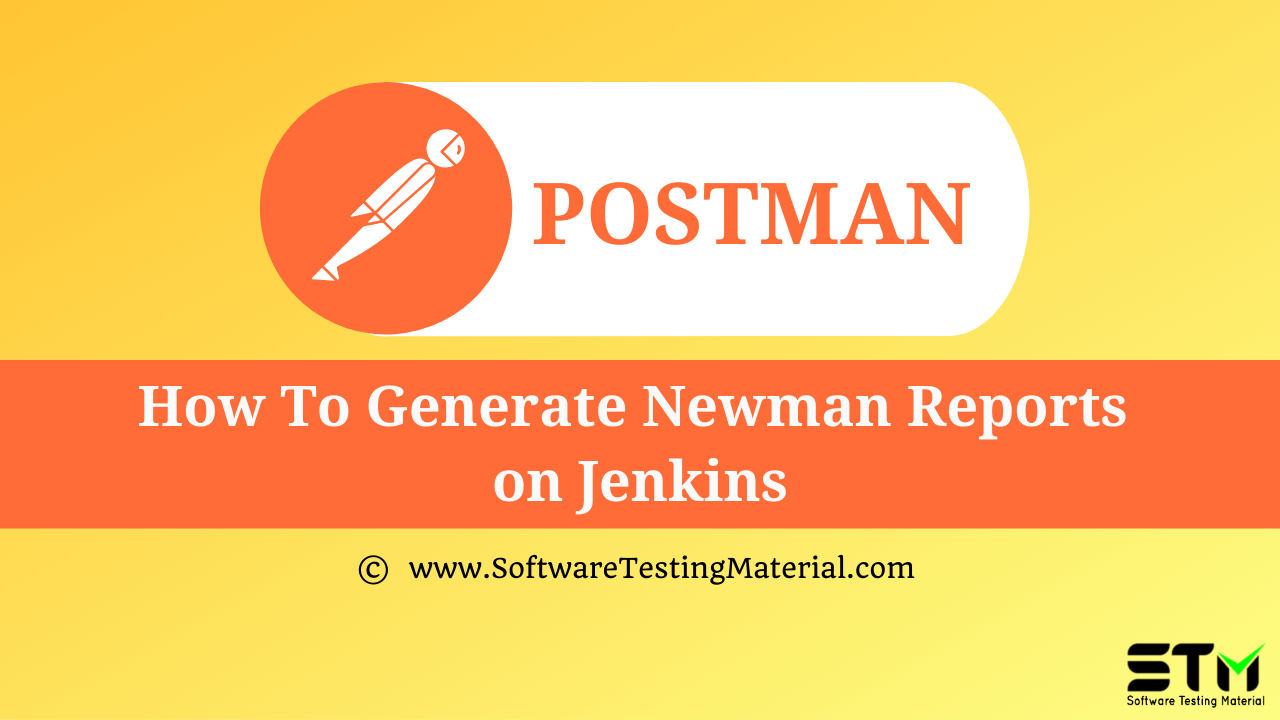

- #Postman newman and jenkins how to
- #Postman newman and jenkins install
- #Postman newman and jenkins series
- #Postman newman and jenkins free
So far so good, we write a POST call that connects to our url and sends some body inside of it, this is the typical thing we are doing most of the time. Now we can write our first api test and are able to use the url variable instead of writing this directly in the field: Now we can define variables in our environment, in this case we define the url to our running application in Kubernetes that was deployed by Jenkins.Īfter we closed the environment modal we can select now this environment from the dropdown list marked in the first picture. Therefore we click on the Settings logo in the right box and on Add in the next Environment list dialog. First we define now an environment with a variable for the url to allow for example tests against localhost and also tests for our running environment.
#Postman newman and jenkins series
Our application we run Continuous Integration and Continuous Deployment on via Jenkins to Kubernetes in Part 3 of the blog post series is now running and we want to check if the api runs still as expected. Postman uses under the hood newman a node package that performs the requests and also executes the tests written in JavaScript.
#Postman newman and jenkins free
Postman has an Enterprise Version, but most of the described things can be done also out of the box with the free version. But you can also use Postman for continuous Monitoring of your running application to check if everything works as expected. But Postman can do much more, you can use Postman for example to test APIs and write tests against the response body. Most developers have used Postman to simply test APIs and to run simple HTTP Requests.

Postman is a tool for testing APIs and developing APIs.
#Postman newman and jenkins how to
The Cypress documentation provides an example first test which has been saved to the junit-cypress-test GitHub repo.In this series of blog posts I’ll describe how to setup on a small environment a complete Continuous Integration and Continuous Deployment pipeline, which components are required and how to deploy them and how to make this a bit more general for additional applications. You can also verify the content of a page to ensure the correct results have been displayed. How to run browser tests with CypressĬypress is a browser automation tool that allows you to interact with web pages in much the same way an end user would, for example by clicking on buttons and links, filling in forms, and scrolling the page. The Node.js website provides downloads, or offers installation instructions for package managers.
#Postman newman and jenkins install
How to install a Jenkins instance with Helmīoth Cypress and Newman (the Postman command-line test runner) require you to install Node.js.How to install Jenkins on Windows and Linux.To follow along with this post you need a Jenkins instance.įor instructions on installing Jenkins in your chosen environment, you can refer to our guides: In this post, you learn how to run E2E tests with Cypress to validate interactions with web pages and with Newman, the command-line test runner for Postman, to validate HTTP APIs. They are typically executed by external tools which interact with the application under test, through public interfaces like web pages or HTTP APIs. E2E tests are long-running, especially compared to unit tests which can complete thousands of checks in seconds. End-to-end (E2E) tests represent the final stages of automated testing.


 0 kommentar(er)
0 kommentar(er)
